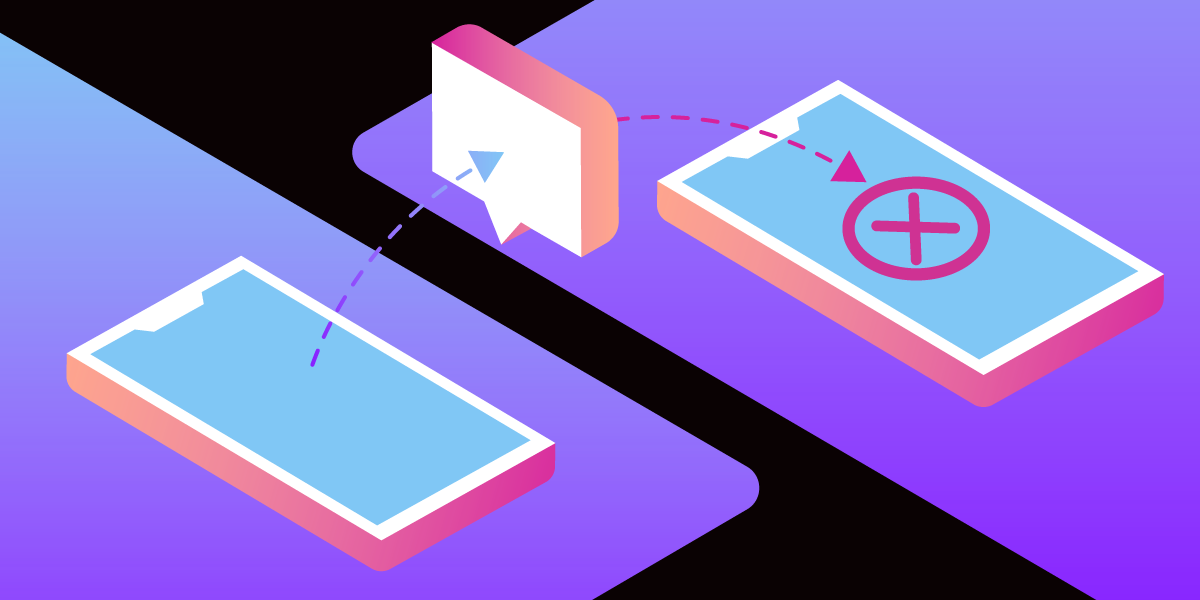
Share:
Former .NET Developer Advocate @Vonage, full-stack polyglottic Software Engineer, AI/ML
Handling Unsupported Inbound Messages With the Messages API
Time to read: 2 minutes
The Messages API enables you to connect with your customers over many social-messaging channels such as WhatsApp, Facebook Messenger, and Viber.
The connection is two-way; you can both send and receive messages. But in the rapidly evolving world of social-messaging channels, there's a unique issue. What happens if a customer manages to send a message type to your business that is not yet supported?
Case in point, what happens when your customer sends you a sticker via WhatsApp? This question is pervasive for folks integrating with the Messages API.
The answer lies in the request body of the inbound message. The JSON of the inbound message contains a type field inside the message's content object.
If the type is unsupported, the type field is unsupported; this is true for WhatsApp, Viber, Facebook Messenger, and MMS. The message body for an inbound message with an unsupported payload will look like this:
{
"message_uuid": "aaaaaaaa-bbbb-cccc-dddd-0123456789ab",
"timestamp": "2020-01-01T14:00:00.000Z",
"to": {
"type": "whatsapp",
"number": "447700900000"
},
"from": {
"type": "whatsapp",
"number": "447700900001"
},
"message": {
"content": {
"type": "unsupported"
}
}
}Notice how it furnishes you with your customer's WhatsApp number. Armed with this information, you can decide how your app will handle it. You may want to make a note that your customer responded to you, and you may wish to reply to them, indicating that they sent a message that you're unable to understand.
I usually like code examples to illustrate concepts like these, so let's look at an example using Node JS. Create a new directory and in its run npm install express body-parser
Now create a new file called server.js. Here, we'll add the following code.
const app = require('express')()
const bodyParser = require('body-parser')
app.use(bodyParser.json())
app.use(bodyParser.urlencoded({ extended: true }))
app.post('/webhooks/inbound-message', (req, res) => {
if(req.body['message']['content']['type'] == 'unsupported'){
console.log("Received an unsupported message from "
+ req.body['from']['number']);
// add the rest of your unsupported logic here.
}
else{
console.log(req.body['message']['content'])
}
res.status(200).end();
});
app.listen(5000)
Start our server by running node server.js. With our server running, the last thing we need to do is to wire up WhatsApp Messages to it.
I'd recommend using ngrok to receive inbound WhatsApp messages locally from the Vonage Messages API. You can start it up by running ngrok http 5000 - which will produce a base URL for you. Your app is going to receive messages on BASE_URL/webhooks/inbound-messages, so use that URL when setting up the Messages API Sandbox.
With all that wired up, you can now send yourself messages. So, if I were to go into WhatsApp and send the Messages Sandbox a Coffee Sticker:
 Coffee Sticker
Coffee Sticker
My app will receive it and print out the message: Received an unsupported message from WHATSAPP_NUMBER.
Otherwise, it will print the content of the message.
 The response in action
The response in action
If you want to learn how to send a WhatsApp message - there's a great explainer from Garann Means
If you're interested in using the Messages API generally, our docs website has loads of content and explanations on how to get up and running.
You can find the code for this blog post in GitHub